How to Layer outdoor clothing for warmth and elemnts protection
The tried and tested layering system has been the staple choice for walkers, mountaineers and climbers for decades. By combining multiple performance layers, outdoor users can enjoy their time in the mountains whilst remaining warm, comfortable and safe. There’s an old saying that goes: “there’s no such thing as bad weather, just bad clothing”. With a good knowledge on how to layer outdoor clothing, any experience can be enjoyable, even in the most extreme conditions. However, make the wrong clothing choices and that experience can be at best miserable, and at worst life threatening.
The main purpose of the layering system
The main purpose of the layering system is to keep you dry, comfortable and warm.
We all know it makes sense to stay dry and warm, especially in the mountains, but it’s worth taking some time to explain how and why we get cold to avoid the potentially life-threatening condition known as hypothermia.
Hypothermia is a medical emergency that occurs when your body temperature falls to below 35˚C — that’s only 2˚C lower than normal!
If your body temperature falls too low it can stop your heart, nervous system and other organs from functioning normally. Without intervention or treatment, your vital systems can fail.
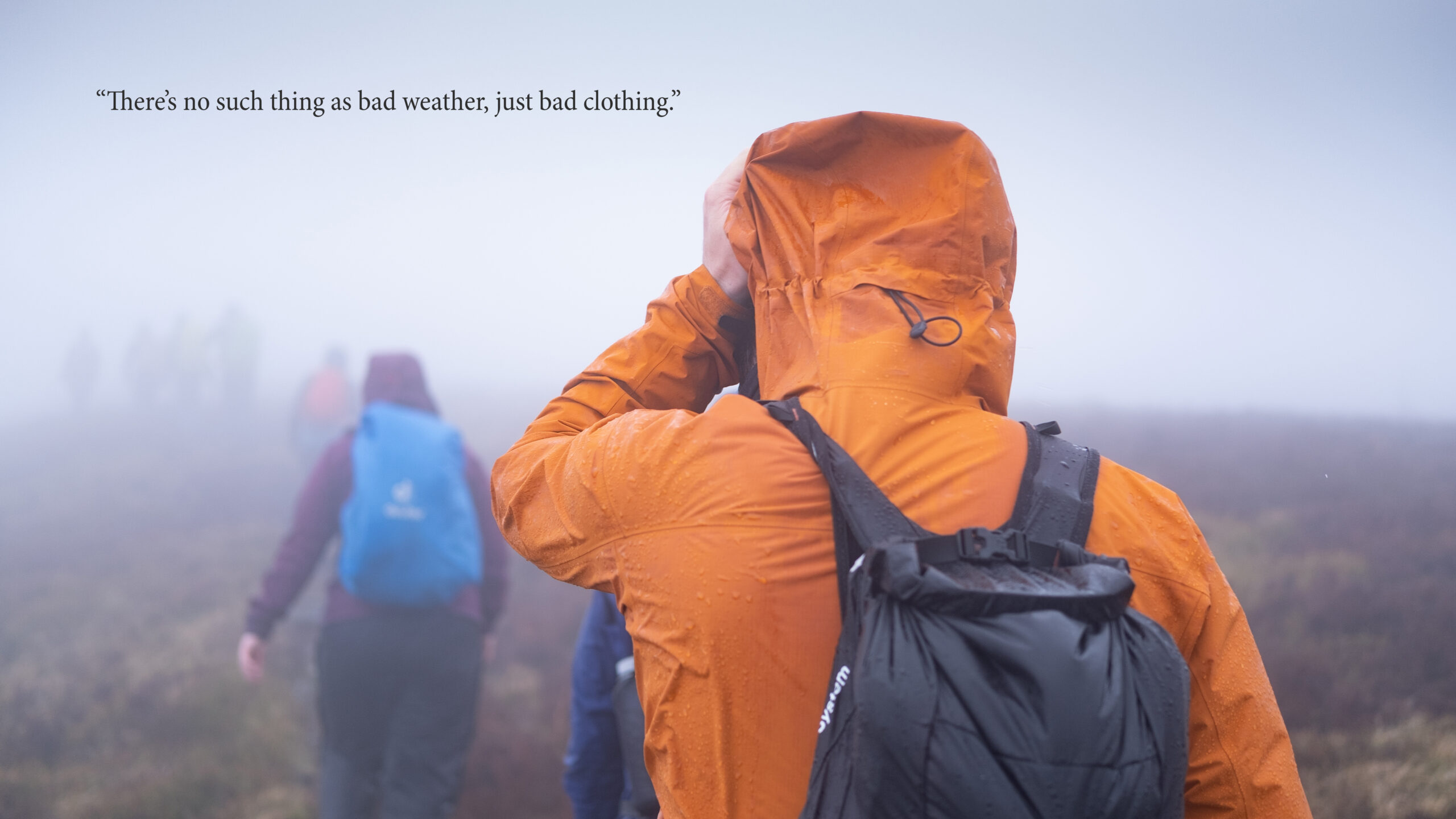
How do we get cold?
The Power of Evaporation: How Moisture Management Can Improve Your Outdoor Experience
Evaporative cooling is the process of moisture evaporating from your skin and is how we humans naturally cool off. We sweat, and that sweat evaporates from our skin to cool us down. However, when in a mountainous environment and when exerting yourself, you can cool off too much and too quickly. Common sense tells us to stay dry when it’s raining. Far too often, people are unaware of how dangerous cold and their own sweat can be. Especially if they are wearing a cotton t-shirt next to the skin. Cotton rapidly absorbs sweat creating a cold, wet layer that encourages evaporative cooling. Add some cold, wet and windy weather and that cooling effect quickly invite the onset of hypothermia.
Modern Layering System: how to layer outdoor clothing
Modern layering systems utilise the cooling power of evaporation to transport (or wick) moisture away from your body. It allows an airflow to keep you cool and relatively dry during heavy exertion. They also dry exceptionally quickly and provide insulation when you stop to ensure you stay warm. The best layering systems manage moisture from the inside, absorb little moisture and allow you to breathe to avoid overheating when slogging uphill.
Don’t Forget Your Hat: Radiant Heat Loss
Metabolism churns, your body gives off heat. If too much escapes to a cold environment, it is harder to keep your core temperature stable. Most people are smart enough to bundle up in a jacket when it is cold outside. But people often forget to wear a warm hat. You can lose a substantial amount of your body heat through an uncovered head, especially if you’re bald. If you were naked, you’d lose more heat via radiation from your chest and core (where your vital organs are stored) than from your head. But of course, most of us don’t wander around the mountains in the buff. Modern layering systems use insulated mid-layers to trap warm air, but don’t forget to use a good quality hat to stop all the warmth from leaking out the top of your head.Conductive Cooling – Cold Ground and Moisture are stealing Your Body Heat
Conductive cooling occurs when heat is lost when something warm contacts something colder. It’s exactly why insulated camping mats are used to stop our warm bodies from contacting the cold ground. When you’re hiking and climbing, your extremities will contact the cold ground. Your hands will grab cold rocks when scrambling and your feet can feel the cold from frozen ground (even inside boots). Conduction also occurs during rain, sleet and snow. Each drop of cold moisture that lands on you will suck away precious heat via conduction. Conductive heat loss combined with radiation heat loss can very quickly lower your core temperature, That’s why it’s so important to keep your hands and head covered.
Convection and wind chill
Convection is the cooling action created by the movement of air (or fluids). Convection can work on a macro-level, such as wind-chill, and on the micro-level next to your skin when you sweat. When we are active outdoors, cold air moves across your body, gets warmed up and rises away allowing more cold air to move in and continue the process. This is exactly why wind chill can be so deadly; it combines a double whammy of evaporative and convective cooling to accelerate the onset of Hypothermia.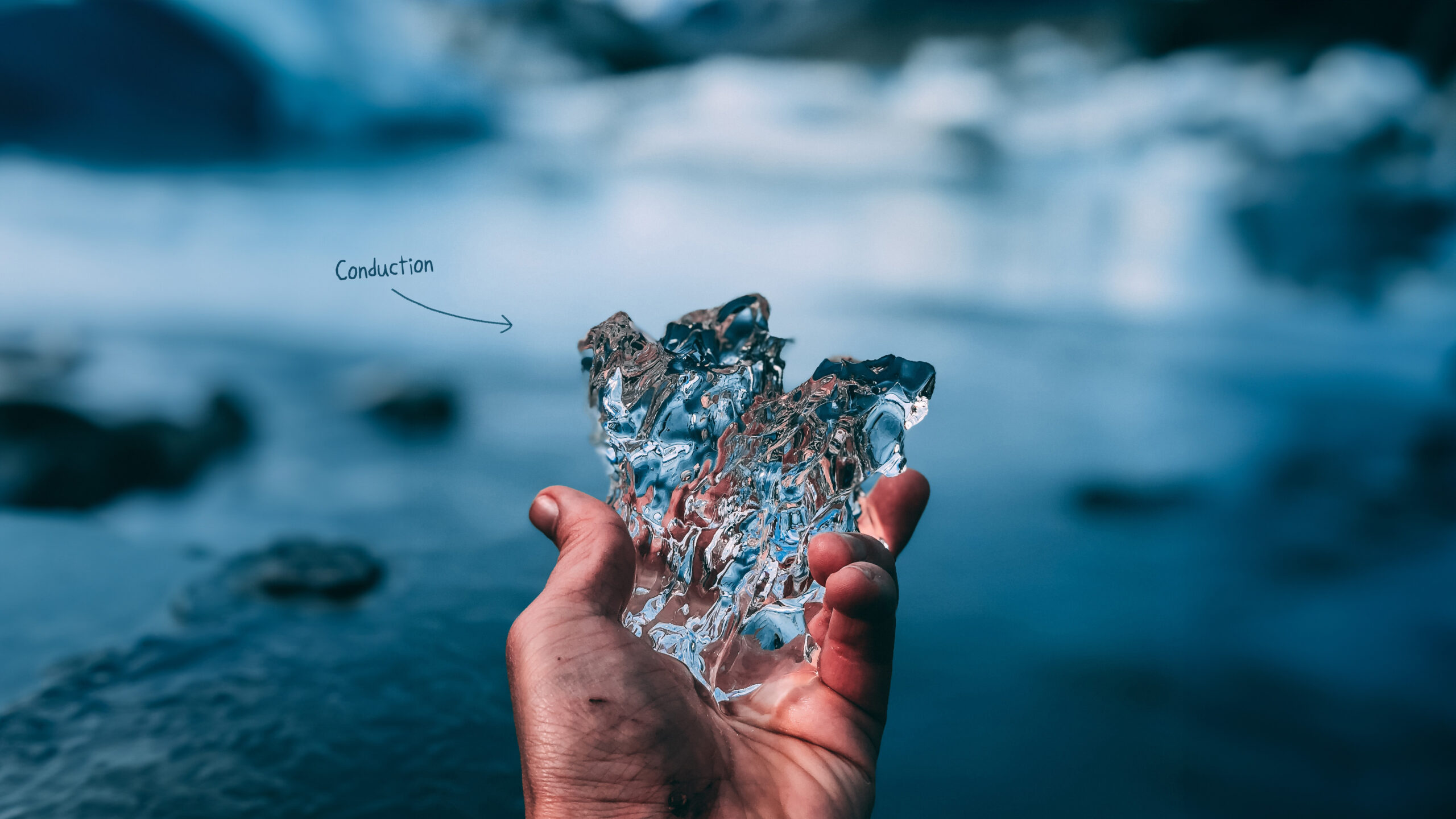
How to layer outdoor clothing – perfect setup
Outdoor baselayers
A baselayer is the layer that sits next to your skin and needs to be close (ish) fitting to ensure as much fabric is in contact with your skin as possible.
This maximises the wicking effect to pull as much sweat as possible away from your body. The baselayer keeps you dry and comfortable by pulling moisture away from your skin and spreading it throughout the fabric where it can either evaporate or be absorbed by the next layer.
The fabric will also offer some insulating properties depending on the nature and weight of the material.
Short or long sleeved?
Lightweight, short-sleeved are great for warm conditions and heavyweight long-sleeved for when it’s freezing.
Never wear cotton as a baselayer. That’s the main rule on how to layer outdoor clothing. The fabric just holds onto moisture and causes too much evaporative cooling. The two main fabrics used in baselayers are synthetic and wool.
Synthetic baselayers
Synthetic materials are normally made from either polypropylene or polyester and are usually easy to wash and wear. Thy are very durable and dry exceptionally quickly—they also tend to be less expensive than wool. They wick moisture incredibly effectively making them perfect for high output activities such as trail running, mountaineering or mountain biking. However they can become a bit stinky over time as they absorb body odour fast.
H ow to layer outdoor clothing: Merino Wool – no more smelly gear
Merino Wool insulates more effectively than synthetic baselayers when it’s cold. It also stays more comfortable over a larger temperature gradient when it’s hot. Although wool takes longer to dry than a synthetic alternative, it continues to insulate well even when wet. Modern merino wool garments are woven from superfine fibres that are not at all itchy and are luxuriously soft next to the skin. The fibres are made from a natural substance called keratin which cannot absorb body odour, so you can wear one top for many days without stinking. We typically recommend the use of merino layers for less-strenuous activities such as hiking, hillwalking, backpacking and travelling. However they will work for virtually any outdoor activity.
The Role of Midlayers
The purpose of the mid layer in how to layer your outdoor clothing journey, is to insulate your body by trapping the warm air you create. Traditionally, fleece has been the midlayer of choice as it is relatively lightweight, effectively traps air in the open fibres and continues the wicking process from your baselayer. Fleeces range from the super light and stretchy to the heavy and fluffy. Your choice will depend on what you’re doing and the conditions you’ll encounter.From Fleece to Softshell
The negative aspect of fleece is that it is not at all wind resistant, so if you’re not wearing a wind/waterproof jacket over the top, all that warm air will be drawn away by the wind leaving you feeling chilled. Windproof fleece, hard-face fleece and softshell garments help to reduce the wind-chill effect. They will repel light rain or snow and work as effective midlayers to keep you comfortable. However, with more weather resistance comes less breathability. This is a balancing act and one that really comes down to personal preference.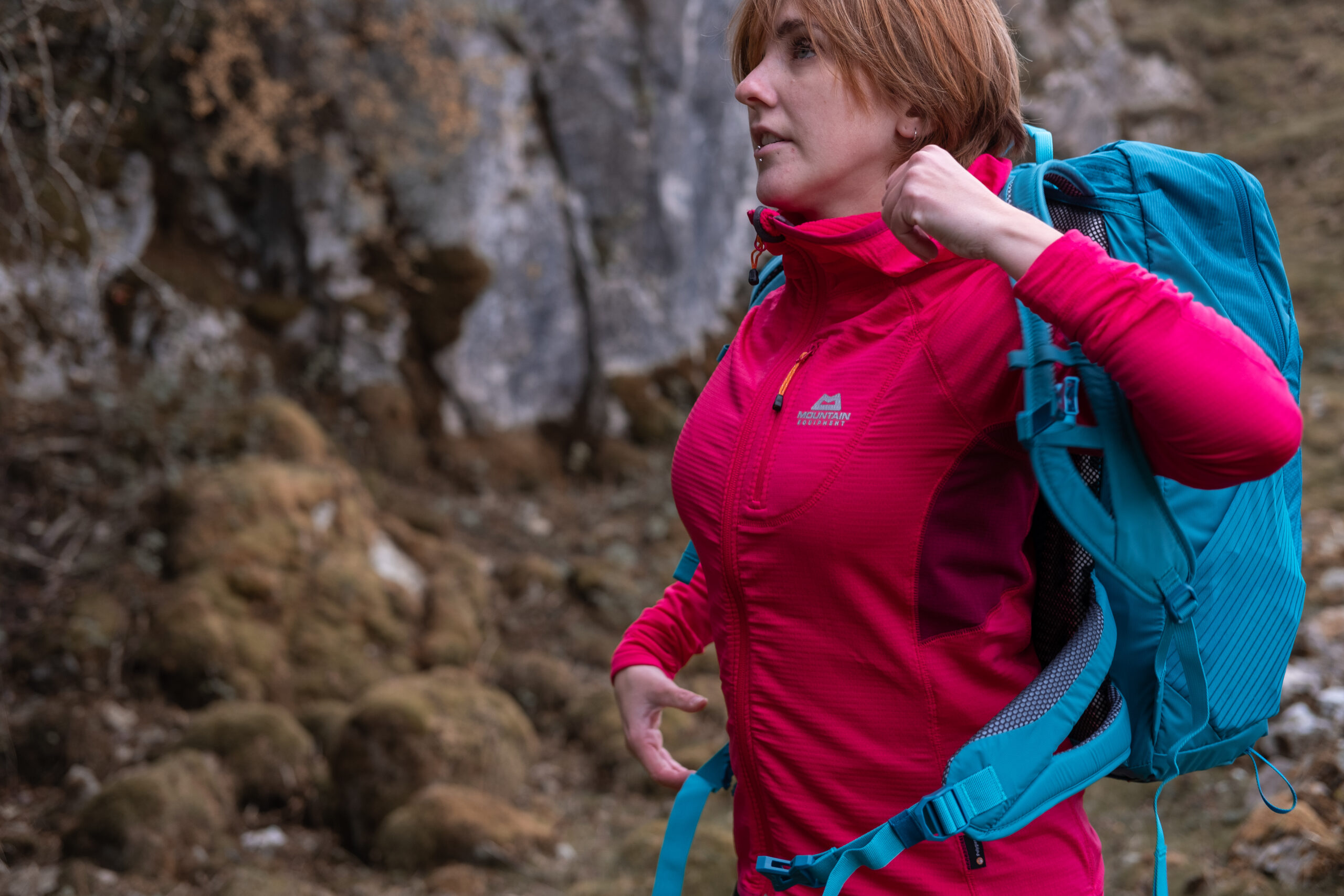
Insulated Layer
An insulating layer makes a great alternative to a bulky fleece layer or adding warmth to your outfit when needed. We always recommend carrying an insulating layer with you, even during summer, in case of an emergency or just to keep you warm during lunch breaks. Advances in fabric and insulation technology have led to thin synthetic or down-filled jackets that offer excellent wind and water resistance with vastly improved insulating properties. These jackets come in different weights to suit varying conditions, so it’s important to choose the one that suits your activity, the conditions, is breathable enough, and dries quickly.
Choosing the Right Insulating Layer
Insulated layers are filled with either a synthetic fibre or with natural down. Down is incredibly comfortable to wear, has a fantastic warmth to weight ratio, breathes superbly and weighs next to nothing. But, and it’s a big but, if the down filling gets wet, it loses its ability to insulate. If your main concern is to have the lightest, most packable insulated jacket available, or you just prefer the ‘baffled’ look, down jackets are for you. But, if you’re frequently out in damp, wet and typically British conditions, a synthetic jacket may be a wiser choice.
Hoods Up, Warmth On
Another smart option is choosing an insulating layer with a hood as it provides a substantial increase in warmth for almost no weight or bulk. Even if the hood isn’t up, the higher collar will provide additional warmth and comfort around your neck and face. We highly recommend carrying an insulating layer in your pack, even if you use a lightweight midlayer or no midlayer at all. Temperatures in the mountains can suddenly drop, so having an insulating layer handy is crucial. If you’re spending nights out in the mountains, combining a midlayer with an insulation layer provides substantial warmth around the campsite, keeping you comfortable until cold mountain conditions force you into the cocoon of your tent and sleeping bag.
Optional—Lightweight Windproof Layer
A lightweight, breathable and wind resistant jacket is an incredibly useful addition to knowing how to layer your outdoor clothing system. Protecting yourself from the heat-robbing effect of windchill makes a significant difference to your comfort. A light wind resistant jacket offers exceptional warmth with virtually no weight and a minuscule pack size. Worn over a base or midlayer, it offers excellent weather protection where a technical outer shell might be overkill. Sometimes you just need a little more insulation but don’t want to overheat by adding a fully insulated layer—the solution is to wear a light wind layer between your base (or midlayer) and your outer shell. Traditionally, these types of jackets are made from tightly woven micro-fibres that block the wind yet remain highly breathable. Modern ultra-lightweight softshell fabrics work exceptionally well in this layer and can withstand abrasion from the environment, harnesses and rucksack straps.
How to layer outdoor clothing: Outer Shell
A technical outer shell is designed to keep out the elements. It allows moist air to escape. It therefore needs to be both waterproof and breathable. It needs to be able to cope with situations where you’ll be sweating profusely or when you’re hunkered down trying to escape from the storm. Fabrics such as Gore-Tex use PTFE membranes sandwiched between layers to provide 100% waterproof protection with exceptional levels of breathability. Advances in construction, design and zip technology combine to produce incredibly efficient garments that can cope with the worst that mother nature can chuck at them. However, they do have big holes in them where your head, hands and legs stick out. Don’t be surprised if you get some moisture inside when out in the nastiest of conditions. Make sure that you have an efficient layering system- it will keep you comfortable and dry quickly.
Sofshell jackets
An alternative outer layer to the traditional waterproof shell is a softshell jacket. Whilst not completely waterproof, it will protect you from all but the worst weather whilst offering much higher levels of breathability than a shell. So, if you know the weather is going to be kind, and you’re going to be thrashing around working up a sweat, a softshell jacket would be the perfect choice. But remember to always pack a fully waterproof shell in your pack as conditions in the mountains can change in the blink of an eye and you’ll be thankful for that fortress-like protection.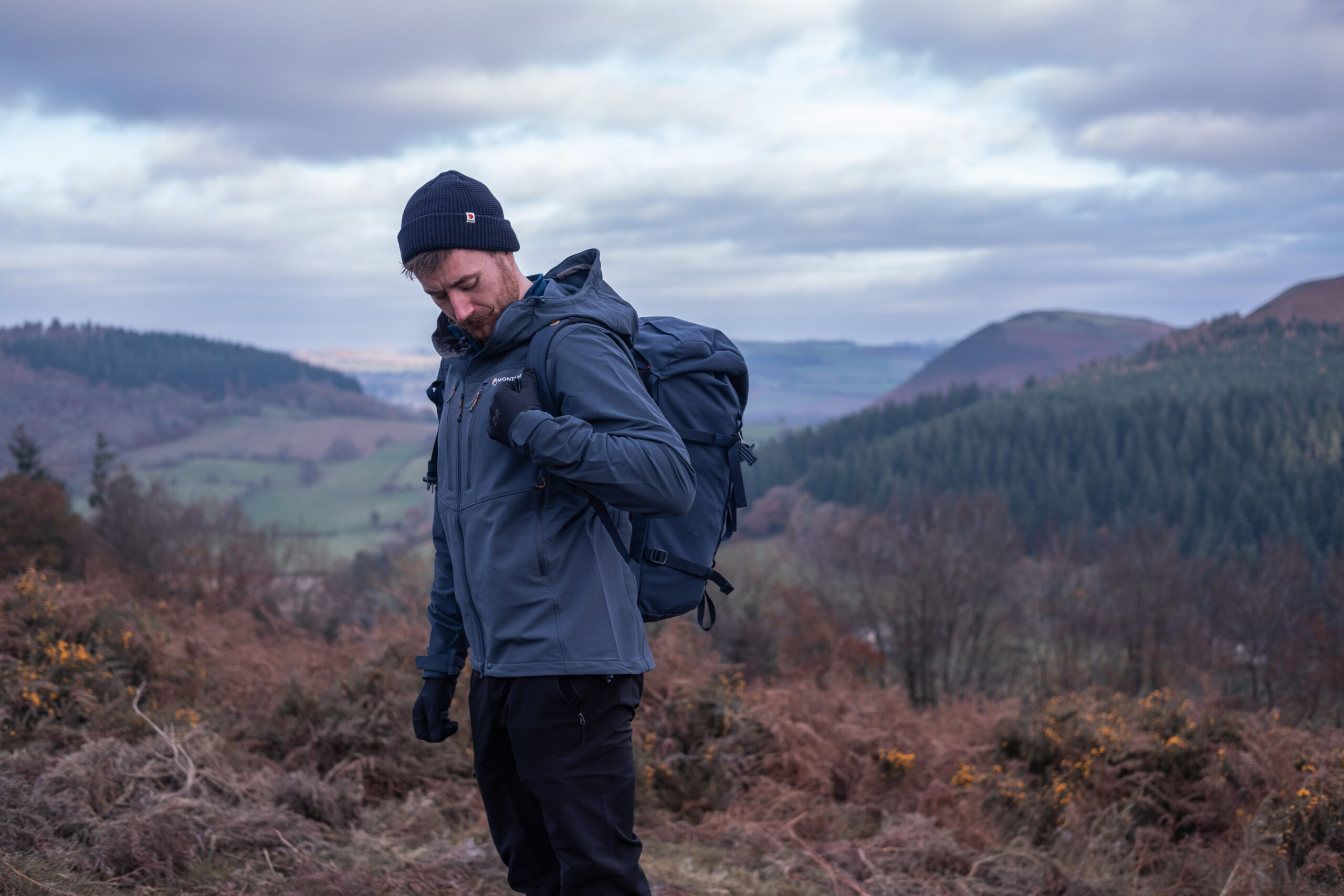


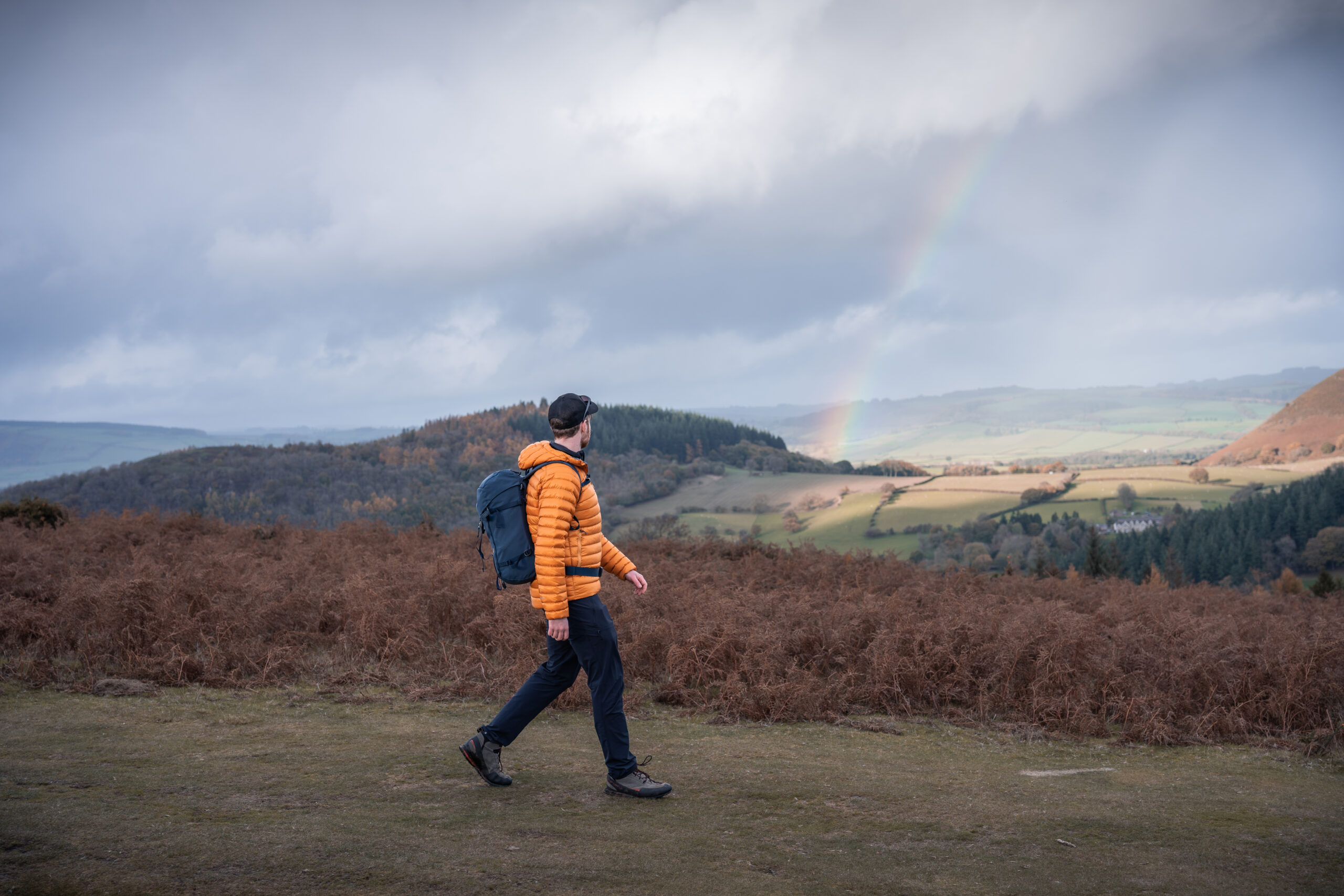
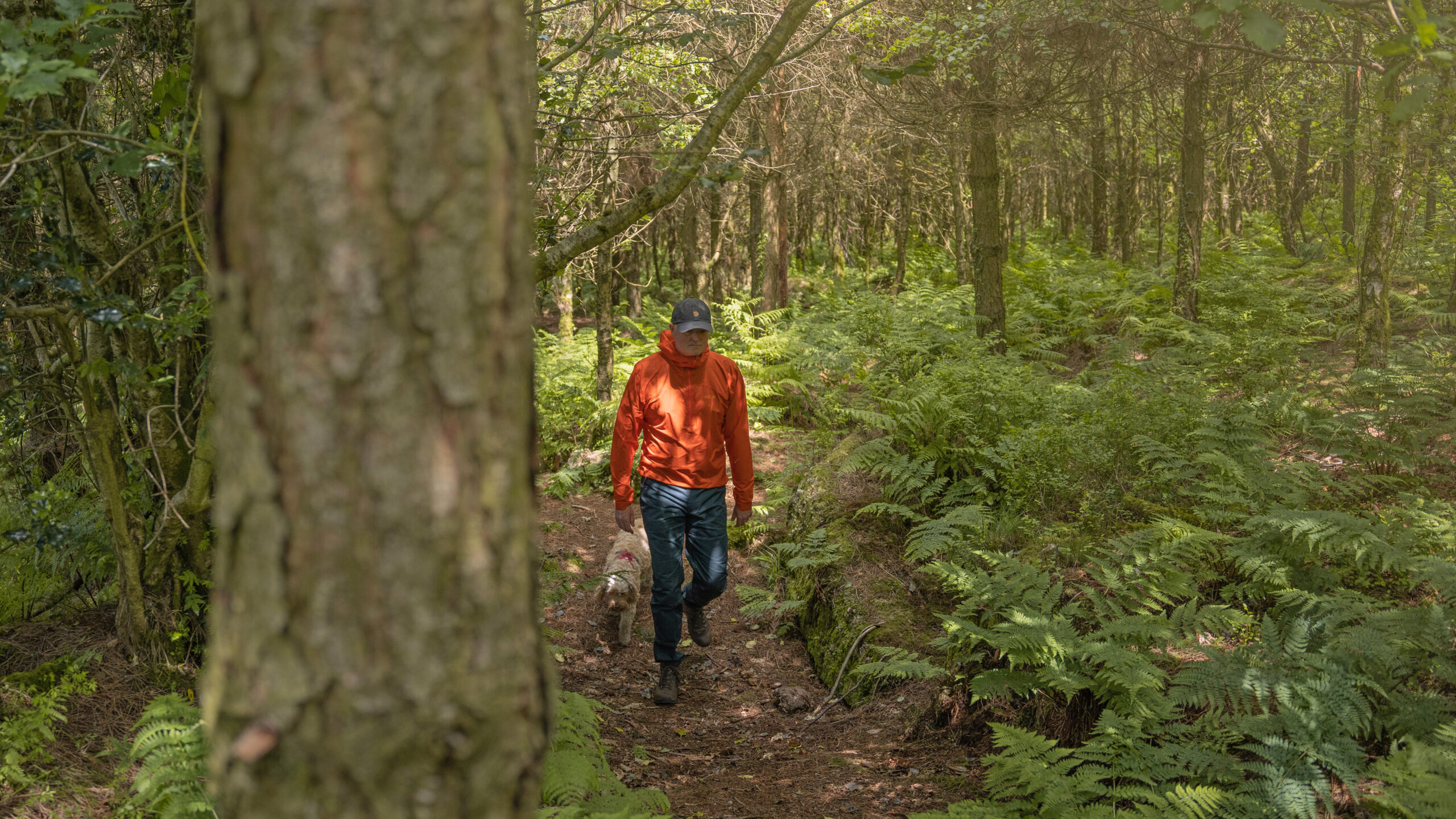
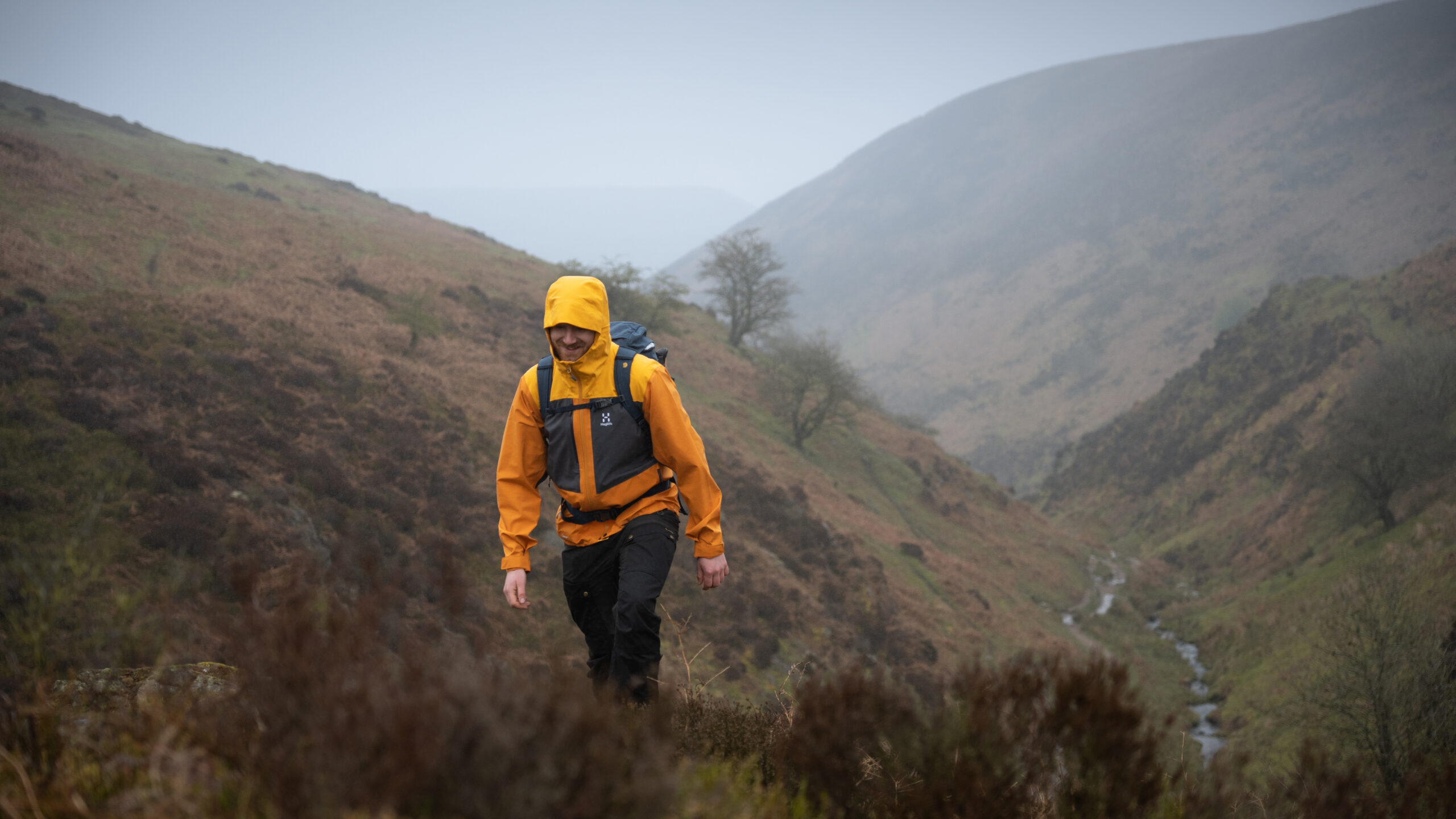
Leave a Reply